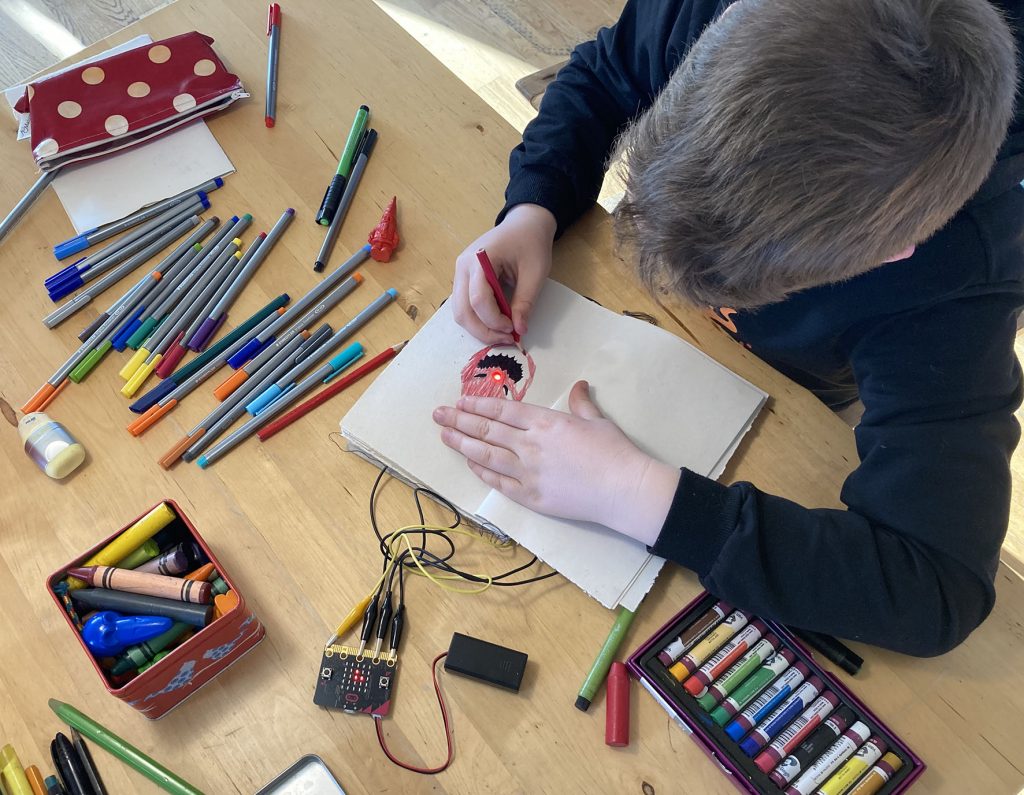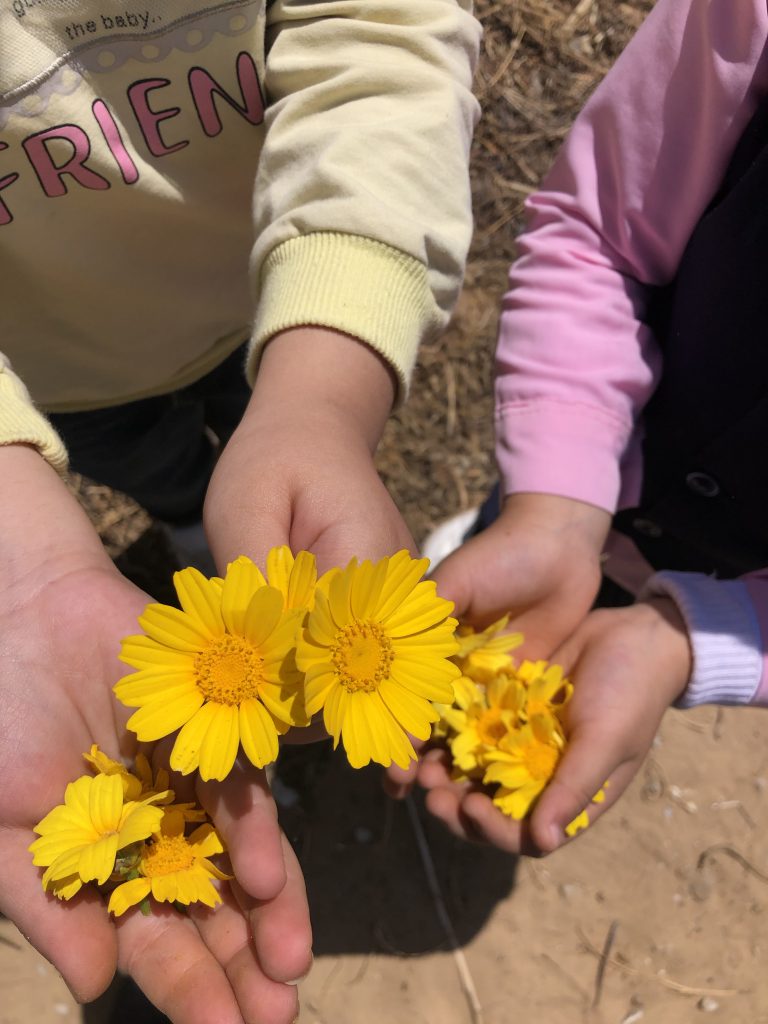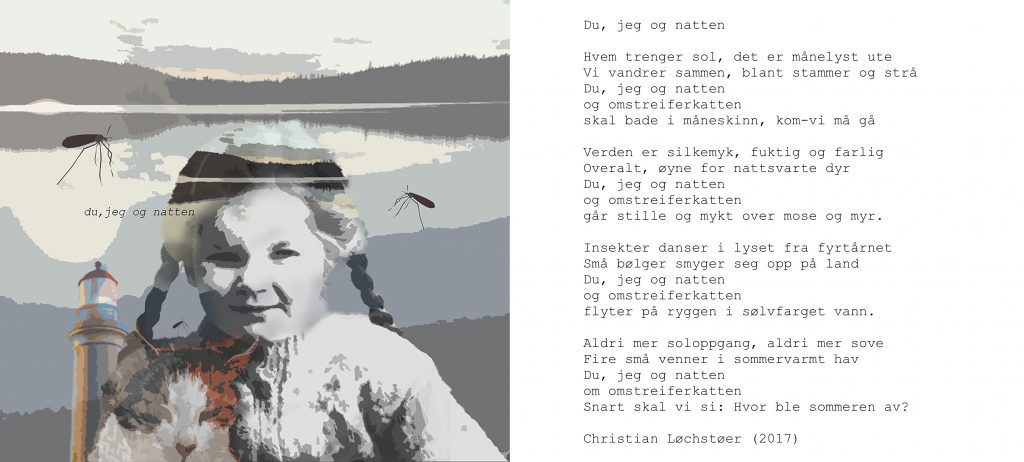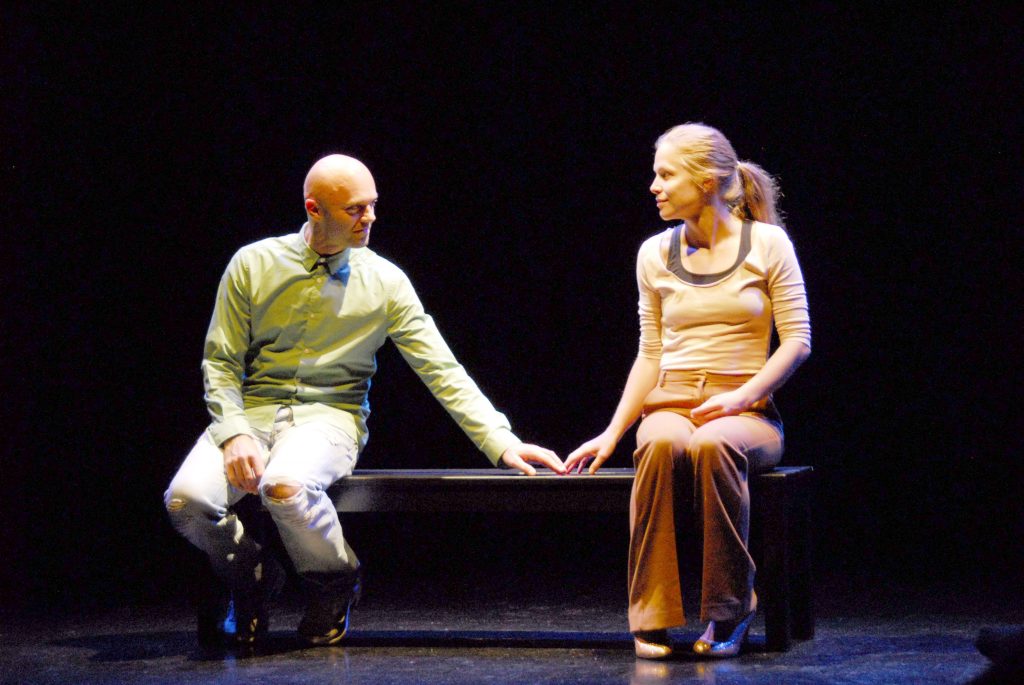Ongoing Research Projects
On this page we present the active projects that are now ongoing in our group, on the other pages you can Follow our Blog or Get to Know us better
All researchers are documenting their Publications so read them here
Maker-Centered Learning: Cultivating creativity in tomorrow’s schools (MAKER) 4 years Project funded by the Research Council of Norway
Researchers: Lovise Søyland, Brynjar Olafsson, NN, Mariam Aljabaly
The research is led by Pirita Seitamaa-Hakkarainen, Camilla Groth and Marte S. Gulliksen from USN.
Digital fabrication technologies have given rise to maker-centered learning, where the aim is to foster creativity through collaborative technology and artifact-mediated making processes. New digital instruments, practices, and materials for creative production and STEAM learning (Science, Technology, Engineering, Arts and Math) are already brought into several Norwegian schools in the form of makerspaces. For teachers there is now an urgent need for pedagogical methods and tools for implementing schools’ maker projects in effective and conscious ways. In this project we will enhance knowledge on how deliberate teaching for creativity can be realized in school makerspaces. We will also generate knowledge on how maker-centered learning may be used to augment creative capabilities and digital competences and how teachers can best facilitate, and scaffold students’ innovation processes. We will develop and implement new pedagogical practices in schools through researcher-teacher partnerships in Norwegian schools. In this way we can test and iterate these new practices and understandings while at the same time educating in-service teachers. Arts and crafts teachers, teacher educators and researchers come together in collaboration in this project. The project is Funded by the Research Council of Norway and it is led by USN, with OsloMet and Helsinki University as partners. Creativity researchers and experts on maker centered learning from University of North Carolina and University of California contribute as experts.

The beach upside down
Researcher: Kari Carlsen
The Beach upside down is an art project that connects craftsmanship, aerodynamics, and nature’s fascinating alternations between the rhythms of the year and day, captured through the camera and taken by the wind.

A particular area of interest for me is the meeting points between physics and aesthetics, concretised by building and flying kites. Playing with kites is flying aesthetics, mathematics and applied aerodynamics, knowledge of materials and craftsmanship. The flight depends on sensitive reading of the landscape and meteorology, perception of the modulations in the sound of the wind in trees and grass, movements in the branches both far away and near, and a micro topographical tactile attention directed to the prickling of sand against the calves before the kite is released from my hand. These are necessary sensory observations for a kite flyer. I have built many kites; from Japanese-inspired rice paper elegant low-wind kites to sturdy box kites with plastic and tape of three-meter size, sharp-flying delta kites for strong winds and lush snake kites and mini kites made of cigarette paper. As kite builder, I pay attention to the constructive properties of the materials. Which proportions and sizes give the wind good leeway? The weight is important, and kites of different construction have unlike behaviour in the air. In this project, with which I have been working on for a long time, I construct kites of above medium size, 90×120 cm.
In-betweens – A study of embodiment as part of pedagogical interaction competence in teacher education
Researcher: Hilde Margrethe Bleg Hegna
In my PhD project I explore embodiment as part of pedagogical interaction competence in teacher education. Within teacher education, the knowledge base is deficient when it comes to articulating, developing, training, guiding and assessing such competence. The project will contribute with increased knowledge about what is going on in the interactions between teacher educators and teacher students, and about their significance for students learning. Thus I am interested in both the interaction and the embodied and situated experience of interacting. The project is part of University of South-Eastern Norway’s R&D program “You will become a teacher…” My theoretical starting point is grounded in phenomenology and embodied phenomenological perspectives that involve an understanding of humans as intertwined with the world, and the body as center of experience (Husserl, 1989; Merleau-Ponty, 2012; Fuchs, 2016; De Jaegher, 2018; Rodemeyer, 2018). The study is case-based, I follow a group of teacher students and their teacher educators. I approach cases of teaching/learning as wholes in context (contextual analysis), and the data material consists of various types of descriptions of lived experiences. The material is produced using several research methods; reflection notes, audio diaries, observation, focus group- and individual interviews. The research question for the PhD project is: What significance does embodiment in pedagogical interaction have for teacher students’ learning?
The significance of framework factors for arts and crafts education in primary school.
Researchers: Kari Carlsen, Anniken Randers-Pehrson and Åsta Rimstad
This research project focuses on the position of arts and crafts in Norwegian primary and lower secondary school. We especially look at key framework factors and what significance these have for the teacher’s teaching and students’ learning in the subject. We see tendencies for group sizes to increase, workshops not being prioritized or downsized and for the area for arts and crafts teaching to be reduced. It is also documented that the teacher competence among teachers who teach the subject is low. In contrast to these tendencies, there is a call for subject specialization in the general public debate and a focus on practical creative work in schools, as the curricula renewal also requires. Based on this dilemma, we are in the process of conducting a nationwide survey among principals and teachers to map administrative, resource and pedagogical factors with significance for the teaching of Arts and Crafts. The research questions are: What framework factors influence the school’s arts and crafts teaching? In what ways do these affect the school’s arts and crafts education?
Colour of Gaza
Researcher: Marie Skeie

Colors of Gaza is a PhD research project by Marie Skeie that is being conducted in collaboration with Sanabel Kindergarten, Gaza. In this project she meets with a group of kindergarten children to work together to find colors from plants in the neighbourhood to dye fabric. They will explore different types of textiles and different ways of extracting and transferring the natural colors to textile. The natural dye fabric will be used to make a banner that can be visible in the neighborhood. Colors of Gaza is part of a broader research project called How to facilitate children’s expressions through aesthetical practice in Palestine. Thisproject is about children’s artistic expression in Palestine, especially in early childhood centers, and it is situated between art and pedagogy. This PhD project is associated with University of South-Eastern Norway’s co-operation with the University in Hebron and the Islamic University in Gaza. The project aims to look at how children be part of aesthetical processes by working with the surrounding landscape and textiles. It focuses on process-based and material-collective practice and includes children’s encounter with materials, experience, and knowledge close to children’s everyday life through visual and aesthetic expression.
Project period 2020-2024
COLLAGE !! Exploration of a didactic and multimodal approach to creative work with text and digital image collage.
Researchers: Kirsten Linnea Kruse and Karete Roksvåg

This study is an empirical and interdisciplinary investigation of a learning design where teacher students create digital and multimodal collages. The project is performed in a Norwegian school context within the subjects of mother tongue (Norwegian) and Arts and crafts. The aim is to enhance the meaning potential of texts, in poetry and other genres as for example non-fiction, and to create a new aesthetic experience and understanding. The research question which is answered is as follows: What characterizes the reader`s and image creator`s multimodal and aesthetic product and ways of understanding in relation to poetry and digital collage, and what kind of learning potential is to find in such an approach? The combination of social semiotic, art theory and subject didactics represents a theoretical framework for the study. Key concepts used in the analysis of the empirical data are multimodal interplay, the co-creative reader, literary and visual metaphors and transparency as a symbolic device in collage. The analysis of student collages and reflective writing has shown that poetry in relation to the digital collage gives new opportunities to play, interpret and think through complex multimodal metaphors and materials. Such an approach to texts involves senses, reflection and the student’s own experiences and makes the texts meaningful in a new way.
Keywords: collage, digital collage, poetry, non-fiction, didactics of literature and art, aesthetic learning, sosialsemiotics and multimodality, transparency, metaphors.
Embodied experiences in a separation processes – a performative multimodal study
Researcher: Trine Ørbæk

Photo by Per Albrigtsen, Østlands-Posten
To understand the concept of intimacy, Maclaren suggest to explore intimacy in relation to separation, and as an overcoming of a separation, when people experience to “fall away” from others, themselves, and reality. I explore this theme through a performative multimodal methodology, using video, pictures, reflection notes, words, interviews and theoretical concepts, and through two dancers’ and my (the choreographer) embodied experiences of ending intimate relationships. The research process began in 2010, when I was divorced. Through Dewey’s concept of aesthetic experience, Fuchs’ concept of emotion and Maclaren’s understanding of intimate relationships as theoretical concepts, I now make a narrative analysis of reflection notes, filmed movements, the documentary «Balance», video of the dance performance «Balance» and a retro perspective interview with the dancers Ida Uvaas and Anders Thoresen. The tentative analysis shows what significance the body has for the development and termination of close relationships; how sharing bodily experiences is important for our presence in the world; how touching and being touched provides insight into the body’s awareness of bodily experiences and how to reflect over own choreography can contribute to what I describe as a bodily aesthetic experience.
Learning culture in Makerspace
Researcher: Ingrid Holmboe Høibo
The strong introduction of touch screens and corresponding learning technology has had a major impact on how digital skills in the various subjects are practiced in the Nordic education system. In parallel with the development in the school, a movement called the maker movement has emerged in society in general (Hatch, 2013). The maker movement focuses on the connection between man and machine and problematizes a digital development that makes man a passive consumer of ready-made solutions (Høibo & Lerpold, 2020) and promotes work with technology as material as a necessary concretization in order to be able to understand and learn about seemingly abstract digital phenomena (Papert, 1993).
This PhD project will investigate the maker movement and learning related to digital skills in the arts and crafts subject. The project is divided into three parts, where the first part is a survey of the view of learning in Makerspaces established in Norwegian schools. Data is collected through SRQ and qualitative interviews with the 16 registered creative workshops (NorwayMakers, 2020). Furthermore, part two will have a more ethnographic approach with case studies of selected maker spaces, qualitative interviews and visual observation. In part three, a similar study of selected creative workshops in Finnish schools (Helsinki) and American schools (Virginia) will form the basis for comparative studies. This part will bring knowledge about the learning culture in the creative movement internationally, but also make visible what is similar and what is special about the learning culture in the creative workshops in Norwegian schools.
Hatch, M. (2013). The Maker Movement Manifesto: Rules for Innovation in the New World of Crafters, Hackers, and Tinkerers. McGraw-Hill.
Høibo, I. H., & Lerpold, M. H. (2020). Digitale ferdigheter som ferdigrett eller råvare? Formakademisk, 13(3). https://doi.org/10.7577/formakademisk.3696
NorwayMakers. (2020, September). Makerspaces i Norge. Norway Makers. http://norwaymakers.org/kart
Papert, S. (1993). Mindstorms : children, computers, and powerful ideas (2nd ed. ed.). Basic Books.
Use of digital resources for pattern work in textile craft
Researcher: Gry Uhlin-Engstu

In connection with the national curriculum renewal in 2020 (LK20) the use of digital tools is more clearly included in the curriculum as a competence goal. This also applies in the subject arts and crafts, where using programming to create interactivity and visual expression is one of the competence goals after 7th grade. It is thus necessary that this competence is implemented in the primary school teacher education for teacher students who take electives arts and crafts for 1st – 7th grade and for teacher students in 5th – 10th grade. One occasion where it may be relevant to use programming to create visual expressions is when working with patterns in needlework, e.g. by a stitching technique such as knitting. In connection to this demand, I’m carrying out a development project, where I as a arts and crafts teacher educator have commissioned teacher students to explore digital resources to create patterns, and to reflect on their findings and experiences from this exploration. I also encourage them to explore and develop digital learning resources for teaching in schools. The goal is that the students can develop competence in this area by engaging in an explorative process. In connection to this topic I’m also in contact with a mathematics teacher, whom with we are developing ideas around programming / pattern formation and algorithmic thinking.
In addition to this, I have entered into a collaboration with Ingvild Birkeland from the Research group for aesthetic learning processes (ForEst). Together we have undertaken to do a study and write a report for SKUP (school development project in Den kulturelle skolesekken), with a focus on the adaptations to the new curricula (LK20). The background for the request is an R&D collaboration between DKS Oslo, OsloMet and Kulturtanken where the parties strengthen the knowledge base for their activities, especially in regards to the introduction of the new curricula.
Making Matters?
Researcher: Marte Sørebø Gulliksen
The project thematizes creative processes and focuses in particular on which cognitive processes take place when a person works creatively in materials. Founded in theories of embodied cognition and an interdisciplinary link of phenomenology, sociocultural analyzes of creative processes, learning sciences and neuroscientific knowledge of cognition, the project aims to develop knowledge of creative processes. Empirical material is developed in my own creative process of working with raw wood. Thematically, the problem is limited to how the woodcarver activates cognitive skills to visualize future, three-dimensional shapes and how the individual’s understanding of space is activated and expanded in work with subtractive design in raw wood. The project is affiliated with USN’s faculty HIU’s teacher education programs. The project is a combined research project and artistic development project. The artistic work is called “Purkinje Series”, a series of wooden sculptures – sculptural bowls and chests – in aspen. Video from the exhibition “PURKINJE” 09 / 9-08 / 10 2020 Foyer Gallery Notodden
METHOD: Case methodology; autoetnographic narrative inquiry; translational theoretical study.
Visual competence as a general education
Researcher: Torunn Smith

The project is about investigating the importance of visual competence as a general education, study specialization and interdisciplinary factor. Visual competence is about the development of students’ own creative abilities at the same time as their subject-specific competence within the area of Art, Design and Architecture (KDA) that is acquired through appropriate didactics. My project is based on a survey among former students from upper secondary school, who have had the opportunity for program subjects within the subject area (KDA) at the same time as teaching a number of other subjects in the study specialization line. After upper secondary school, the informants are asked if they feel they have acquired visual competence through the teaching in KDA, and whether the KDA studies and any visual competence had an impact on them in upper secondary school, but also for later studies / other education, working life and life otherwise i.e. whether the mentioned symbiosis of subjects has had any pedagogical and academic significance in a longer perspective. The survey is followed by in-depth interviews of the previous informants. Further relevant information is sought through double hermeneutics, where the importance of subject didactics for the development of competence is focused on. The purpose of the project is to contribute with knowledge about how visual competence can meet key goals for the school in the future, in terms of developing students’ broad competence which also includes creative abilities.
The boundaries of automation and the possibilities of aesthetics.
Researcher: Morten Henrik Lerpold
The intention of the research project is to explore and reflect on contemporary conditions and opportunities for embodied knowledge as well as related concepts such as tacit knowledge, skills knowledge and intuitive knowledge. This will be researched via simultaneously examining technologies related to artificial intelligence, automation, robotics, biotechnology. I will examine the limits of automation, i.e. to reflect and examine which outer limits the automation encounters, regarding what cannot be automated, or brought under the digital and the general computerization of knowledge.
I also want to reflect in future scenarios on these terms, by including precedents as we know them from novels, but not least science fiction films. The genre of science fiction, which today constitutes one of the most exciting in the art forms, thinks of different possible scenarios for what could possibly come The genre is today characterized by thinking of time in new ways (science fiction films are today characterized by almost being simultaneous, or show us parallel eras, as well as the folds of time into each other in parallel. Many take up topics related to artificial intelligence, automation, robotics, biotechnology, and thus touch the outer limits of automation. They show us images via our imaginings. of what cannot be automated, but which concerns embodied knowledge and emotions. (ex-machina, Blade Runner, Here, Lobster, films that transform film traditions back to German expressionist film as we know it from about 1920). Next to the film genre, I will also include examples from contemporary art, crafts, music, and in general the practical-aesthetic subjects in educational institutions.
#moving molecules” – explorations raising aluminum
Researcher: Anniken Randers-Pehrson

moving molecules # 1: Making bumps and jumping hurdles – exploring resistance raising aluminum.
In this study twofold study, I first explore the phenomenon of resistance in making. It involves an effort to map out what Sennet describes as probably the greatest challenge for any good craftsman: “To see in the mind’s eye where the difficulties lie” (Sennett, 2009, s. 230). The goal is getting deeper understanding of resistance involved in making processes. Such knowledge can be of interest both in the field of crafts-research and in the field of Arts and craft education while it taps into and explores craft-experience. In this experiential research project, I am an ethnographer of my own experiences as I write and map out experiences through multi-sensorality. Documentation and reflection are key factors in order to enable knowledge-creation when activating a practice-led research strategy. The making process captured and documented through video, think-aloud accounts and verbalized reflections, before, under and after making, inspired by how this done in another craft- research context.

In the next phase, “moving molecules” #2: excavations – explorations
I am deepening my craft-experiences and knowledge challenging myself and aluminum further. For this project the aim is to continue raising aluminum pushing borders between prior-knowledge and the unknown. The aim is to carve out expressions and to activate an understanding between me, aluminum, and the processes we encounter. This is a project in an early stage and will develop during spring and summer of 2021. The goal is to display findings of the making process in autumn 2021.